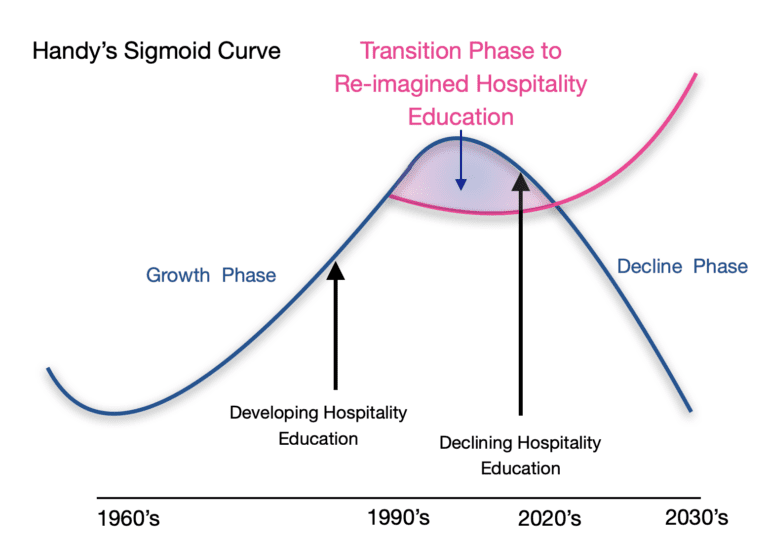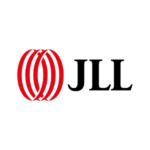 There is increasing evidence that international hospitality education at all levels faces significant challenges. The evidence is in the declining student numbers and the closure of some departments and schools, with others being merged. This seems particularly true in the UK and parts of Europe, while there is evidence that Asia continues to grow. This happens when the international demand for high-quality professional staff has never been higher.
There is increasing evidence that international hospitality education at all levels faces significant challenges. The evidence is in the declining student numbers and the closure of some departments and schools, with others being merged. This seems particularly true in the UK and parts of Europe, while there is evidence that Asia continues to grow. This happens when the international demand for high-quality professional staff has never been higher.
Why is this? More importantly, is this a terminal decline or can hospitality education meet these challenges and emerge more resilient and fit for the future?
Internationally, hospitality programmes have different origins. Some were directly industry-inspired and, in some cases, industry-funded and sponsored, whilst others have developed from vocational courses designed to meet higher-level professional skills needs.
The factors impacting hospitality education are complex, historical, and more recent. External factors include the public’s and government’s perceptions and attitudes to the hospitality industry, the funding for professional hospitality courses, the differences found in different cultures of the value of hospitality as a career option, and a lack of a wider understanding as to what hospitality education really is.
So, what is hospitality education?
If we assume that it is designed to provide the professional skills, knowledge and understanding to be able to take up professional roles in the hospitality industry, then this provides a guide against which hospitality courses can be benchmarked. Hospitality education could be characterised by the relationship between “ Doing” and ‘Knowing’. Doing relates to professional skills and competence to be able to operate within and manage complex operations. Knowing provides the context, the understanding of the processes and the knowledge base to be able to draw on in decision-making.
The hospitality industry is a complex, creative, innovative industry where production and consumption typically occur simultaneously in the same place. It is about creating and sustaining ‘hospitality experiences’ for the guest, at its core about being hospitable. Professionally, it is the art and science of managing people, as staff and guests, and managing the resources and processes of delivering a hospitable experience.
Traditional hospitality education
Hospitality education has traditionally been based on ‘active learning’, the reflective engagement with the real world. It has been variously described as work-based learning, real-world learning, experiential learning, learning by doing, hands-on learning and, more recently, authentic learning. Whatever term is used, it is based on the paradigm of merging of theory with practice and acknowledges the relationship between the doing and the knowing. A relationship that in areas of hospitality education, has become more of the knowing at the expense of the doing. In moving away from the doing, the cultural values and the art of being hospitable are lost.
It could be argued that the peak of hospitality education, at least in the UK, was in the late 1990s and early 2000s. The subject was valued as a major contribution to institutional portfolios, especially in polytechnics, and there was a fee differential for the funding of hospitality that supported the important operational resources, including laboratories and training restaurants. At the time, it was estimated there were over 11,000 students on relevant undergraduate awards, with between 2,000 and 3,000 graduating yearly. The current position is that the total UK student enrolments are nearer the 1998 number of graduating students.
So what has changed from 1998-2001?
Has the public perception of the industry changed? Have government attitudes changed? Probably not sufficiently to be entirely responsible for the declining student numbers and the number of programmes being offered. Other factors must be at play here, and they can’t all be related to the pandemic. The decline in student numbers and the increasing marginalisation of hospitality as a professional subject area had started long before. In 2014 at a Council for Hospitality Management, Education Conference (CHME), a presentation titled “The Homogenisation of Hospitality Education”, highlighted the narrowing of the hospitality curriculum, the changing relationship between the doing and the knowing and the ‘academic drift’ away from the professional hospitality context to becoming aligned to business management programmes. The declining number of courses being offered and the competitive nature of higher education seem to encourage convergence towards a more standardised theoretical curriculum.
Some institutions bucked that trend and maintained their provision, whilst others, over time, took strategic decisions to reduce the scale and nature of the programmes, often through structural change within the institutions. The examples are many. At the same time, there was a rise in the importance of research and the funding related to it, which exacerbated the academic versus the professional debate. The decline is, therefore, both attributable to external factors as well as the internal factors at play within the institutions.
What’s the result of these changes?
As a result of these internal factors, hospitality, as a subject, has become marginalised. Structural change in institutions through mergers or integration within larger academic groupings, often business schools, provided the opportunities to create ‘educational efficiencies’, by delivering generic management subjects to large groups of students studying a range of disciplines. This has, over time, significantly changed the nature of the hospitality curriculum. This is now very evident through even a casual review of typical hospitality curricula, where the “specialist” hospitality subjects are often only a third of what is a business management course, with little or no reference to real-world learning of hospitality operations. The reduction and, in some cases, the loss of the opportunity for work-based learning through internships and placement has not gone unnoticed. What was once an essential and much-valued component of what was known as sandwich courses are now, at best, optional extras and, at worst, not an option at all. The opportunity for students to develop and understand the professional culture of the industry in terms of behaviours, standards and relationships that move beyond the theory into the practice is significantly reduced.
The results of these changes include;
- A reduction in specialist hospitality staff, especially those with relevant industry experience, and the loss of the professional identity, culture and ethos were major features of hospitality departments and their programmes.
- The responsibility for hospitality as a subject within institutions has often been moved down several levels within the institutional hierarchy.
- The internal voice of the hospitality educator has been diminished and can often be drowned out by the more numerous colleagues.
The impacts of changes in funding
Rapid growth in hospitality education in the UK occurred from 1964 onwards, with the creation of Polytechnics and the expansion of higher education reaching a peak, probably between 1998 and 2000. Since then, with the change from Polytechnics to Universities and the changes in funding, it has been on the decline curve. It could be argued that the decline is now accelerating, whether it has reached the point of no return is a matter of debate.
New hope
However, applying Professor Charles Handy’s Sigmoid Curve Theory also provides hope. Handy identifies the key is to start a new growth curve well before you reach the decline phase of the existing curve. This transition period is best achieved when some resources and ideas can be used to affect the transition and change. There is no shortage of ideas on reimagining hospitality education and creating the opportunity for transition and change. The issue is whether or not the existing structures and external strictures are flexible enough to be able to facilitate and encourage change. As Albert Einstein is reported to have said, “You cannot solve a problem with the same thinking that created the problem.”

Although this piece has been written based on an analysis of the UK experiences, hospitality educators across the globe will find parallels with their own experiences. They will not all be in the same place on the S-curve and may still be developing their hospitality education, as in Asia and the Middle East. However, they will all understand the importance of hospitality education to the industry and the wider social context in which hospitality operates.
There are exceptions to these generalisations. Some institutions have retained, grown and developed hospitality as independent departments. Hotel schools, especially private schools, have demonstrated the flexibility to respond to industry and effect transition and change. But all schools tend to follow the existing patterns and models to a greater or lesser extent.
Future requirements
What is now required is a much more radical view, not based on ‘tweaking’ the existing models, but on working with the industry and wider stakeholders to create new models that transition to a new growth curve and re-imagined and re-engineered hospitality education fit for the future.
If you are interested in contributing to developing the debate as to whether or not hospitality education is in decline, you can join the first in the series of three webinars on the 19th of October.
These are part of the EUHOFA (The International Association of Hotels, Hospitality, Culinary Arts and Tourism Schools since 1955) 23/24 Education Webinar Series.
The Panel:
Dominic Szambowski – Dean, SHMS, Switzerland
Andrew Boer – Principal, Edge Hotel School, University of Essex, UK
Stuart Wiggins – Pro-Vice Chancellor, ICMS, Australia
Peter A. Jones – Moderator, EUHOFA International
Details and registration can be found at: https://www.euhofa.xyz/single-post/webinar-hospitality-education-in-crisis-thursday-19th-october-09-30-bst
Or scan the QR Code:


































